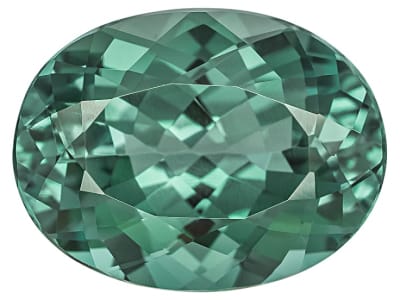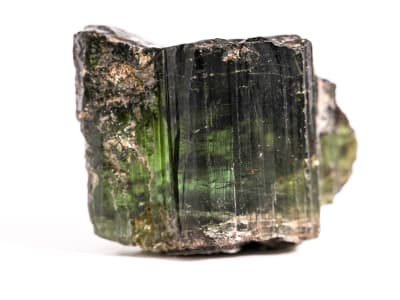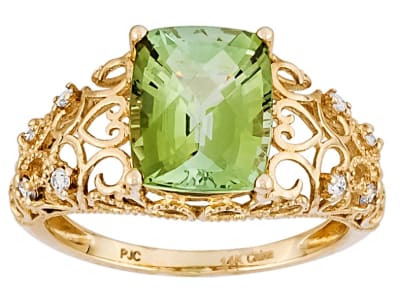Verdelite refers to green elbaite tourmaline that does not contain chromium. Although green is a common color of tourmaline, not all greens are valued equally. Verdelite gems come in varying shades of green; some so saturated that direct light is necessary to see the body color. From lush grass-green to electric yellow-green to olive, and even bluish green, there is a verdelite gem to fit all tastes.
General Information
Common Name
Verdelite
Species
Tourmaline
Transparency
Transparent - Opaque
Dispersion
Strength: Moderate Fire Value: 0.017
Refractive Index
1.610-1.665
Birefringence
0.018-0.020
Optic Character
Uniaxial
Optic Sign
Negative
Polariscope Reaction
Doubly Refractive (DR)
Fluorescence
SWUV: Variable
LWUV: Variable
LWUV: Variable
Pleochroism
Dichroic, strong dark green and yellow-green
Hardness
7-7.5
Streak
White
Specific Gravity
3.000-3.260 Typical:3.060
Toughness
Good
Inclusions
Verdelite tourmaline is Type I clarity stone. Stones might contain liquid and gas inclusions that are long and thin, reflective gas-filled fractures and color zoning.
Luster
Vitreous
Stability
Very Good
Fracture
Conchoidal, Subconchoidal, Uneven
Cleavage
Poor, in two directions
Chemical Name
Complex boro-silicate of Al, Li and Na
Chemical Formula
Na(Li1.5Al1.5)Al6(Si6O18)(BO3)3(OH)3(OH)
Crystal System
Trigonal
Chemistry Classification
Silicate
Verdelite Colors
-
 Green
Green -
 Green
Green -
 Green
Green -
 Green
Green -
 Green
Green
Alternate Names
Verdelith
Countries of Origin
Afghanistan; Russian Federation; Czechia; Sri Lanka; Japan; United States of America; Madagascar; Kenya; United Kingdom of Great Britain and Northern Ireland; India; Sweden; Mozambique; Unknown; China; Finland; Brazil; Italy; Australia; France; Nigeria; Germany; Tajikistan


